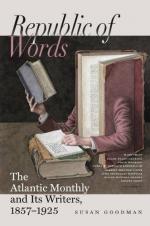But the central idea of Ellsworth’s short life was the thorough reorganization of the militia of the United States. He had studied with great success the theory of national defence, and, from his observation of the condition of the militia of the several States, he was convinced that there was much of well-directed effort yet lacking to its entire efficiency. In fact, as he expressed it, a well-disciplined body of five thousand troops could land anywhere on our coast and ravage two or three States before an adequate force could get into the field to oppose them. To reform this defective organization, he resolved to devote whatever of talent or energy was his. This was very large undertaking for a boy, whose majority and moustache were still of the substance of things hoped for. But nothing that he could propose to himself ever seemed absurd. He attacked his work with his usual promptness and decision.
The conception of a great idea is no proof of a great mind; a man’s calibre is shown by the way in which he attempts to realize his idea. A great design planted in a little mind frequently bursts it, and nothing is more pitiable than the spectacle of a man staggering into insanity under a thought too large for him. Ellsworth chose to begin his work simply and practically. He did not write a memorial to the President, to be sent to the Secretary of War, to be referred to the Chief Clerk, to be handed over to File-Clerk No. 99, to be glanced at and quietly thrust into a pigeon-hole labelled “Crazy and trashy.” He did not haunt the anteroom of Congressman Somebody, who would promise to bring his plan before the House, and then, bowing him out, give general orders to his footman, “Not at home, hereafter, to that man.” He did not float, as some theorists do, ghastly and seedy, around the Adyta of popular editors, begging for space and countenance. He wisely determined to keep his theories to himself until he could illustrate them by living examples. He first put himself in thorough training. He practised the manual of arms in his own room, until his dexterous precision was something akin to the sleight of a juggler. He investigated the theory of every movement in an anatomical view, and made several most valuable improvements on Hardee. He rearranged the manual so that every movement formed the logical groundwork of the succeeding one. He studied the science of fence, so that he could hold a rapier with De Villiers, the most dashing of the Algerine swordsmen. He always had a hand as true as steel, and an eye like a gerfalcon. He used to amuse himself by shooting ventilation-holes through his window-panes. Standing ten paces from the window, he could fire the seven shots from his revolver and not shiver the glass beyond the circumference of a half-dollar.
I have seen a photograph of his arm taken at this time. The knotted coil of thews and sinews looks like the magnificent exaggerations of antique sculpture.




